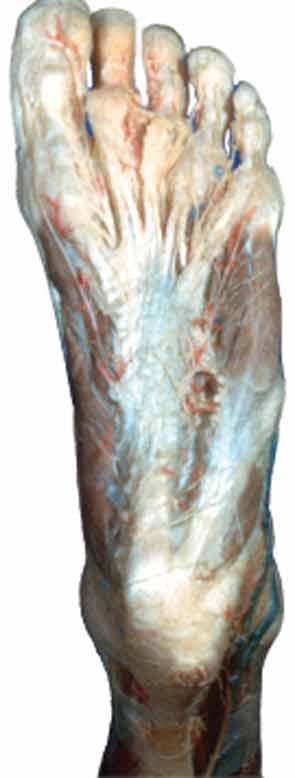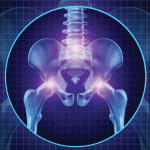
Fasciae are defined as the dense and loose layers of connective tissue that envelop the body and surround muscles.1 Fasciae therefore should fall squarely within the purview of rheumatology, the specialty that is concerned with painful disorders affecting the locomotor system, including joints, muscles, and “soft” connective tissues. However, a perusal through rheumatology textbooks reveals that fascia is barely mentioned. Why? Is it because no painful disorders involve fascia? Though fascia can be the source of pain, it may have fallen into a “blind spot” in rheumatologic research.
The birth of rheumatology in the 1940s was quickly followed by important immunological discoveries that oriented a large segment of rheumatology research to focus on autoimmune, rather than other pathophysiological, mechanisms. Furthermore, two syndromes have confused the role of fascia: fibromyalgia and myofascial pain. Fibromyalgia is now considered to be a disorder of the nervous system (involving increased pain sensitivity and sleep disturbances), without any consistently observable abnormality in peripheral soft tissues, while myofascial pain syndromes remain poorly defined.2 Focal areas of soft-tissue tenderness and induration are common clinical findings, although the reliability of physical diagnosis in identifying specific lesions is poor.3 The presence of muscle hyper-reactivity to mechanical stimulation (twitch response) at such sites has engendered the hypothesis that these conditions are due to hyperirritable muscle end plates.4 This theory remains controversial however, and the possibility that focal areas of soft-tissue pain could originate from connective tissue, rather than muscle, remains unproven and mostly untested.
Fascia as a Source of Pain
In fact, the question, Can pain come from fascia? is surprisingly unanswered at the present time. Up until recently, it was not even clear whether fascia was “innervated” or not. Of course, connective tissues contain sensory nerves. Are these nerves merely traversing the fascia on their way to other tissues (e.g., skin, muscle), or do they actually terminate in fascia and convey sensations from this tissue? Two recent studies have now established that the latter is true: fasciae are substantially innervated, and there are sensory receptors within fascia that respond to mechanical and chemical stimuli.5-7 Furthermore, the receptive fields of these sensory neurons enlarge in the presence of inflammation, supporting the potential role of fascia as a “pain generator.”8
Are there any pathological processes involving fasciae that are associated with musculoskeletal pain? Recent studies describing thickening and decreased mobility of the thoracolumbar fascia in patients with chronic back pain suggest the presence of inflammation and/or fibrosis.9,10 However, this association does not provide any indication as to whether fascia thickening could be a causative or predisposing factor to back pain, versus a secondary phenomenon, perhaps caused by changes in movement patterns that are known to accompany back pain. Nevertheless, the presence of measurable abnormalities of fascia in the presence of chronic pain suggests that looking at fasciae in other painful musculoskeletal conditions might be fruitful. For example, in osteoarthritis, much attention is focused on joints, specifically the cartilage, synovium, joint capsule, and underlying bone. Less well-defined “periarticular” structures, including the fasciae and aponeuroses of muscles that attach to the joints, are not often mentioned. Persistent pain and stiffness following total joint replacement for osteoarthritis is a well-recognized occurrence, presumably arising from nonarticular structures (since the joint itself has been removed). Is it possible that these structures may have contributed to some of the pain even before surgery? Identifying fascia abnormalities preoperatively might be a useful way to target those patients that are at risk for a poor surgical outcome.
In fact, the question, Can pain come from fascia? is surprisingly unanswered at the present time. Up until recently, it was not even clear whether fascia was “innervated” or not. Of course, connective tissues contain sensory nerves.
Similarly, rheumatoid arthritis (RA) involves joints, beginning with synovitis and progressing to destruction of cartilage and bone. Is it possible that inflammation may also be present in periarticular connective tissue, including fasciae? Could fascia involvement in rheumatoid arthritis contribute to pain and the diffuse “morning stiffness,” even before overt joint pathology has occurred? If this is the case, gentle stretching might help decrease inflammation in these tissues, especially if started in the early stages of the disease. For example, recent studies in rodents have shown that gentle stretching can decrease pain sensitivity and inflammation of connective tissue.11,12 Although the mechanisms underlying these antiinflammatory effects are not known, stretching represents a potentially important noninvasive measure that could be a useful adjunct to RA treatment. Determining the correct “dose” of stretching that could generate antiinflammatory effects without causing more tissue damage would obviously be important.

